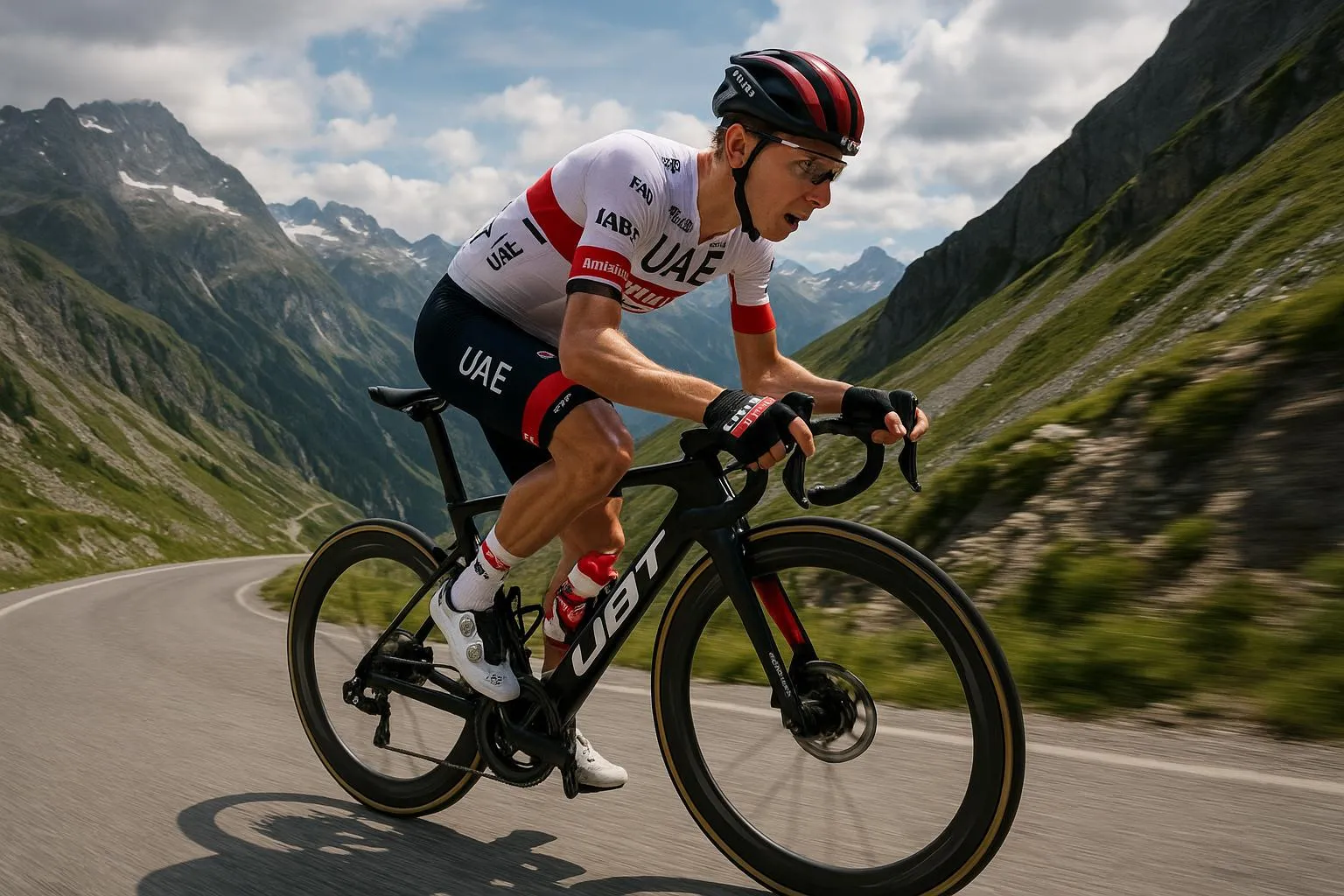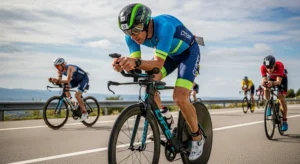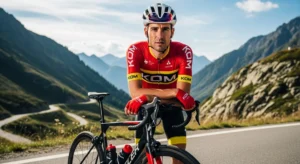The 2025 Tour de France will be remembered as the year that fundamentally changed cycling forever. In a stunning departure from decades of conventional wisdom, the world’s best climbers chose aerodynamic bikes over traditional lightweight climbing machines, even on the most grueling mountain stages. When Tadej Pogačar and Jonas Vingegaard opted for their aero bikes during a stage featuring 4,950 meters of climbing, they didn’t just win stages—they rewrote the rulebook on cycling performance optimization [1].
This revolutionary shift represents more than just equipment choices; it signals a complete transformation in how we understand the relationship between aerodynamics, weight, and climbing performance. The 2025 Tour de France has officially declared that the era of the traditional climbing bike is over, replaced by a new generation of lightweight aero machines that excel across all terrain types. Combined with breakthrough innovations in crank length technology and advanced materials science, we’re witnessing the dawn of a new age in cycling performance.
The implications extend far beyond professional racing. As these technologies trickle down to consumer markets, amateur cyclists worldwide are gaining access to the same performance advantages that propelled the world’s best riders to victory in France. Understanding these innovations isn’t just about following professional cycling trends—it’s about unlocking new levels of personal performance and redefining what’s possible on two wheels.
The Aero Revolution in Professional Cycling
The Death of the Traditional Climbing Bike
The 2025 Tour de France delivered a shocking revelation that has fundamentally altered cycling’s technological landscape. For decades, conventional wisdom dictated that lightweight climbing bikes were essential for mountain stages, while aerodynamic bikes were reserved for flat stages and time trials. This philosophy crumbled when the world’s premier climbers consistently chose their aero bikes for the most challenging mountain stages of the race [2].
The physics behind this revolutionary shift are both compelling and counterintuitive. Advanced wind tunnel testing and real-world performance data have revealed that aerodynamic advantages persist even at the relatively low speeds typical of steep climbs. While traditional thinking focused solely on weight savings, modern analysis considers the complete performance equation, including rolling resistance, aerodynamic drag, and power transfer efficiency. The results demonstrate that even on gradients exceeding 8%, the aerodynamic benefits of modern aero bikes outweigh the marginal weight penalties when compared to traditional climbing bikes.
Professional teams have invested millions in computational fluid dynamics analysis and real-world testing to quantify these advantages. The data reveals that modern aero bikes, despite being 200-400 grams heavier than pure climbing bikes, deliver measurable time savings across virtually all racing scenarios. This performance advantage becomes even more pronounced when considering the varied terrain of grand tours, where riders face everything from flat sections to steep climbs within single stages.
The transformation extends beyond individual bike choice to fundamental race strategy. Teams now optimize their equipment selection based on comprehensive performance modeling that considers wind conditions, gradient profiles, and tactical positioning. The result is a more nuanced approach to equipment selection that prioritizes overall performance over traditional category-based thinking.
Tour de France 2025 Case Studies
The most compelling evidence for this technological revolution came during Stage 15 of the 2025 Tour de France, featuring the brutal ascent to Plateau de Beille. Despite facing 4,950 meters of climbing and gradients reaching 12%, both Pogačar and Vingegaard chose their aerodynamic bikes over traditional climbing machines [3]. Their performance on this stage wasn’t just impressive—it was historically significant, setting new benchmarks for climbing speeds while using equipment previously considered suboptimal for such terrain.
Detailed telemetry data from the stage reveals the sophisticated reasoning behind these equipment choices. While the aero bikes carried a weight penalty of approximately 300 grams compared to their climbing alternatives, the aerodynamic advantages proved decisive during the numerous sections where speeds exceeded 25 kilometers per hour. Even during the steepest climbing sections, where speeds dropped to 15-18 kilometers per hour, the improved power transfer efficiency and superior stiffness-to-weight ratios of the aero frames provided measurable advantages.
Team UAE Emirates and Team Visma-lease a Bike have revolutionized their approach to equipment selection through advanced performance modeling. Their sports scientists utilize real-time weather data, course profiles, and individual rider characteristics to optimize bike selection for each stage. This data-driven approach has proven so effective that other WorldTour teams are rapidly adopting similar methodologies, creating an arms race in performance optimization technology.
The psychological impact of these equipment choices cannot be understated. When the world’s best climbers consistently choose aero bikes for mountain stages, it sends a clear message about the evolution of cycling technology. This shift has influenced equipment choices throughout the professional peloton, with riders at all levels reconsidering their assumptions about optimal bike selection for different terrain types.
Short Crank Technology Breakthrough
The 150mm Crank Revolution
Perhaps no innovation from the 2025 season has generated more discussion than the adoption of dramatically shorter crank arms by elite professionals. Jonas Vingegaard’s experimentation with 150mm cranks represents a radical departure from the traditional 170-175mm standard that has dominated cycling for decades [4]. This isn’t merely a minor adjustment—it’s a fundamental reimagining of the rider-bike interface that promises significant performance benefits across multiple dimensions.
The biomechanical advantages of shorter cranks are both immediate and profound. Reduced crank length decreases the range of motion required at the hip joint, allowing riders to maintain more aerodynamic positions without compromising power output. This is particularly beneficial for riders with limited hip flexibility or those seeking to optimize their aerodynamic profile. The reduced hip flexion also decreases the risk of hip impingement and associated discomfort during long rides or races.
Professional fitting data from leading bike fit specialists reveals that shorter cranks can improve power transfer efficiency by reducing the dead spots in the pedal stroke. The more compact circular motion allows for smoother power delivery and can reduce the muscular fatigue associated with extreme hip flexion angles. For riders who struggle with traditional crank lengths, the switch to shorter cranks often results in immediate improvements in comfort and sustainable power output.
The adoption rate among professional cyclists has accelerated dramatically throughout 2025. What began as experimentation by a few forward-thinking riders has evolved into a widespread trend affecting equipment choices across multiple WorldTour teams. Crank manufacturers have responded by expanding their shorter crank offerings, with some now producing cranks as short as 145mm for specific applications.
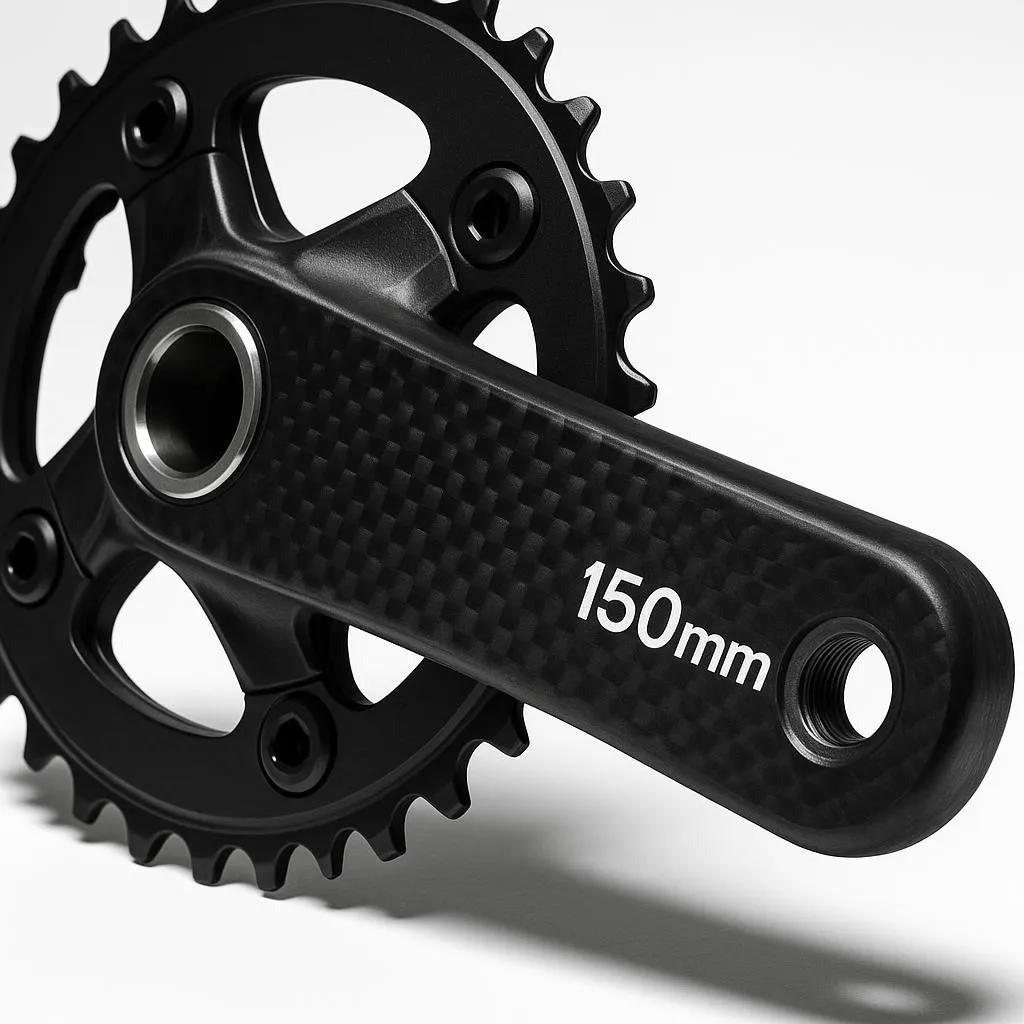
Science Behind Shorter Cranks
The scientific foundation supporting shorter crank adoption rests on sophisticated biomechanical analysis and extensive real-world testing. Research conducted by leading sports science institutions has demonstrated that crank length optimization can yield measurable improvements in both aerodynamic efficiency and sustainable power output [5]. The key lies in understanding the complex relationship between joint angles, muscle activation patterns, and aerodynamic positioning.
Shorter cranks enable riders to achieve more aggressive aerodynamic positions by reducing the hip flexion required at the top of the pedal stroke. This biomechanical advantage translates directly into reduced aerodynamic drag, particularly important during time trials and breakaway situations. The improved hip angle also allows for better core stability and more efficient breathing patterns, contributing to enhanced endurance performance during long efforts.
Power meter data from professional riders using shorter cranks reveals interesting patterns in force application and pedaling efficiency. While peak power numbers may remain similar, the consistency of power delivery throughout the pedal stroke often improves significantly. This smoother power application reduces mechanical stress on the drivetrain and can contribute to improved efficiency, particularly during sustained efforts at threshold intensities.
The injury prevention benefits of shorter cranks are becoming increasingly recognized by sports medicine professionals. Reduced hip flexion decreases the risk of hip impingement syndrome and can alleviate knee tracking issues in riders with anatomical predispositions to these problems. For cyclists with previous hip or knee injuries, shorter cranks often provide a pathway to continued high-level performance without exacerbating existing conditions.
Lightweight Materials Innovation
Advanced Carbon Fiber Technology
The 2025 season has witnessed remarkable advances in carbon fiber technology that have enabled manufacturers to create bikes that are simultaneously lighter and more aerodynamically efficient than ever before. These innovations represent the culmination of years of materials science research and manufacturing process refinement, resulting in frames that challenge traditional assumptions about the weight-versus-aerodynamics trade-off.
Modern carbon fiber layup techniques utilize computer-controlled fiber placement systems that optimize material distribution with unprecedented precision. These advanced manufacturing processes allow engineers to place carbon fibers exactly where they’re needed for structural integrity while minimizing material usage in non-critical areas. The result is frames that achieve remarkable stiffness-to-weight ratios while incorporating complex aerodynamic shapes that would have been impossible with previous manufacturing techniques.
The integration of advanced resin systems has further enhanced the performance characteristics of modern carbon fiber frames. New thermoplastic resins offer improved impact resistance and fatigue life compared to traditional thermoset materials, while maintaining the lightweight characteristics essential for high-performance cycling applications. These material advances have enabled manufacturers to create frames that are not only lighter but also more durable and reliable over extended use periods.
Computational design tools have revolutionized the frame development process, allowing engineers to optimize every aspect of frame geometry and material distribution through sophisticated finite element analysis. This design approach considers multiple performance criteria simultaneously, including aerodynamic efficiency, structural stiffness, weight minimization, and manufacturing feasibility. The result is a new generation of frames that represent true optimization rather than compromise between competing design objectives.
Smart Component Integration
The evolution toward integrated smart components represents another significant trend shaping the 2025 cycling landscape. Modern bikes increasingly feature seamlessly integrated electronic systems that provide real-time performance feedback while maintaining the clean aerodynamic profiles essential for optimal performance. This integration extends beyond simple component mounting to fundamental design philosophy that considers electronic systems as integral elements of overall bike performance.
Advanced power meter technology has evolved to provide unprecedented accuracy and reliability while reducing weight and improving aerodynamic integration. The latest generation of power meters offers dual-sided measurement with accuracy levels exceeding 99%, enabling riders to optimize their pedaling technique and training intensity with scientific precision. These systems integrate seamlessly with modern bike computers and training platforms, providing real-time feedback that can immediately influence performance decisions.
Electronic shifting systems have reached new levels of sophistication, offering faster and more precise gear changes while reducing the complexity of cable routing and maintenance requirements. The latest systems feature wireless communication protocols that eliminate the need for internal cable routing, simplifying frame design and improving reliability. Battery life has improved dramatically, with some systems offering over 1,000 hours of operation between charges.
The integration of environmental sensors and GPS technology has created opportunities for real-time performance optimization based on external conditions. Modern cycling computers can adjust power targets and pacing strategies based on wind conditions, gradient changes, and temperature variations. This level of technological integration represents a fundamental shift toward data-driven performance optimization that was previously available only to professional teams with dedicated support staff.
Impact on Amateur Cycling
Technology Trickle-Down Effect
The revolutionary technologies showcased in the 2025 Tour de France are rapidly becoming accessible to amateur cyclists, creating unprecedented opportunities for performance improvement across all levels of the sport. This democratization of professional-grade technology represents one of the most significant developments in cycling’s recent history, enabling recreational riders to access equipment and insights previously reserved for elite athletes.
Consumer versions of the aerodynamic technologies that dominated the 2025 Tour de France are already appearing in mainstream bike lineups from major manufacturers. While these consumer implementations may not achieve the absolute performance levels of their professional counterparts, they offer substantial improvements over traditional bike designs at price points accessible to serious amateur cyclists. The performance benefits that convinced professional teams to abandon traditional climbing bikes are equally relevant for amateur riders seeking to optimize their performance across varied terrain.
The availability of shorter crank options has expanded dramatically as manufacturers respond to growing demand from informed consumers. Bike shops are increasingly equipped to provide professional fitting services that can determine optimal crank length for individual riders, making this technology accessible to cyclists who previously had limited options for customization. The performance and comfort benefits of properly sized cranks are often immediately apparent to amateur riders, making this one of the most impactful upgrades available.
Smart component technology has become increasingly affordable and user-friendly, enabling amateur cyclists to access sophisticated performance monitoring and optimization tools. Consumer-grade power meters now offer accuracy levels that rival professional equipment at a fraction of the cost, while smartphone apps provide analysis capabilities that were previously available only through expensive professional software. This technological accessibility has created opportunities for amateur cyclists to train and compete with unprecedented precision and effectiveness.
Practical Implementation Guide
For amateur cyclists considering upgrades based on 2025’s technological innovations, a systematic approach to implementation can maximize performance benefits while managing costs effectively. The key lies in understanding which technologies offer the greatest performance improvements for individual riding styles and competitive goals, then prioritizing upgrades accordingly.
Aerodynamic improvements typically offer the greatest performance benefits for cyclists who spend significant time riding at speeds above 25 kilometers per hour or who participate in time trials and competitive events. For these riders, investing in aerodynamic frame geometry and component integration can yield measurable time savings that justify the additional cost. However, cyclists who primarily ride in mountainous terrain at lower speeds may find that traditional lightweight designs still offer advantages, particularly if climbing performance is the primary objective.
Crank length optimization represents one of the most cost-effective performance upgrades available to amateur cyclists. A professional bike fit that includes crank length analysis can identify whether shorter cranks would benefit individual riders, and the relatively modest cost of crank replacement makes this upgrade accessible to most cyclists. The comfort and efficiency improvements often justify the investment regardless of competitive aspirations.
Smart component integration should be approached strategically, with power meters typically offering the greatest training and performance benefits for serious amateur cyclists. The ability to train with precise power targets and monitor performance improvements over time provides value that extends far beyond the initial equipment cost. However, cyclists should ensure they have the knowledge and commitment to utilize these tools effectively before making significant investments in smart technology.
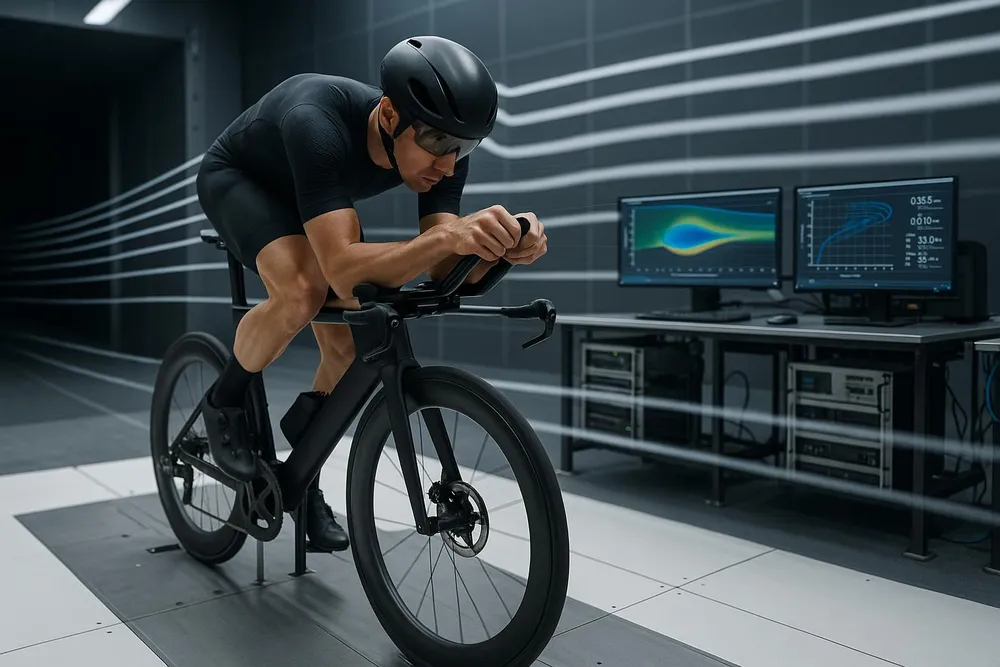
Future Implications and Trends
Upcoming UCI Rule Changes
The Union Cycliste Internationale (UCI) faces significant challenges in regulating the rapid technological evolution demonstrated during the 2025 season. The governing body must balance the promotion of innovation with maintaining competitive equity and preserving the fundamental character of cycling competition. Proposed rule changes for 2026 and beyond will likely address several key areas where technology has advanced beyond current regulatory frameworks.
Aerodynamic regulations may require updating to address the sophisticated integration techniques that have enabled manufacturers to create increasingly efficient bike designs. The current rules, developed when aerodynamic and lightweight designs represented distinct categories, may need revision to address modern bikes that excel in both areas. The challenge lies in maintaining innovation incentives while preventing technology from overwhelming the human element of competition.
Component integration rules will likely evolve to address the increasing sophistication of electronic systems and smart components. The UCI must consider how to regulate technologies that provide real-time performance feedback and optimization while maintaining competitive fairness. The integration of artificial intelligence and machine learning capabilities in cycling computers and training systems presents particular regulatory challenges that will require careful consideration.
Safety regulations may also require updates to address new materials and construction techniques. While modern carbon fiber technology has generally improved safety through better impact resistance and fatigue life, the UCI must ensure that regulatory frameworks keep pace with materials science advances. The challenge lies in maintaining safety standards while allowing continued innovation in frame design and construction techniques.
Next-Generation Innovations
The technological trajectory established during the 2025 season points toward even more revolutionary developments in the coming years. Advances in materials science, manufacturing techniques, and electronic integration suggest that the current generation of innovations represents just the beginning of a broader transformation in cycling technology.
Artificial intelligence integration represents perhaps the most significant opportunity for future development. AI-powered systems could provide real-time optimization of gear selection, pacing strategies, and aerodynamic positioning based on environmental conditions and individual physiological responses. These systems could learn from individual rider patterns and preferences to provide increasingly sophisticated performance optimization over time.
Advanced materials research continues to push the boundaries of what’s possible in frame construction and component design. Graphene-enhanced carbon fiber composites promise even better strength-to-weight ratios, while smart materials that can adapt their properties based on loading conditions could revolutionize frame design. These materials advances could enable bikes that automatically optimize their characteristics for different riding conditions.
The integration of renewable energy systems and advanced battery technology could eliminate the current limitations of electronic component systems. Solar-powered charging systems and improved battery chemistry could enable always-on smart components that provide continuous performance monitoring and optimization without the current concerns about battery life and charging requirements.
For more information on related cycling technology topics, explore these comprehensive guides: Advanced Cycling Technology – Discover the latest innovations in cycling equipment and performance optimization, Cycling Performance and Health Optimization – Learn evidence-based strategies for improving cycling performance, Smart Cycling Technology Revolution – Explore how connected devices are transforming the cycling experience, and Cycling Recovery Technology Revolution – Understand how advanced recovery systems enhance performance and health.
